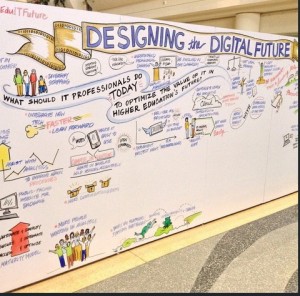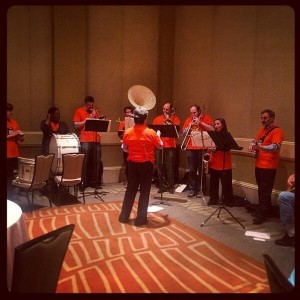 After a brief visit to Scripps College , I headed to Orlando to attend the EDUCAUSE annual conference. It was well attended as evidenced by long lines during lunch times. I have never seen such lines before. If you are interested in my tweets during the conference, you can check them out here. If you want to see all tweets with the hashtag #edu14, click here. Though the latter one is long, it is worth reading through some of them or by further filtering based on your interest. I was too tired to tweet after a while because the sessions I went to did not have much for me to tweet and the others were doing a better job.
After a brief visit to Scripps College , I headed to Orlando to attend the EDUCAUSE annual conference. It was well attended as evidenced by long lines during lunch times. I have never seen such lines before. If you are interested in my tweets during the conference, you can check them out here. If you want to see all tweets with the hashtag #edu14, click here. Though the latter one is long, it is worth reading through some of them or by further filtering based on your interest. I was too tired to tweet after a while because the sessions I went to did not have much for me to tweet and the others were doing a better job.
I always look forward to general sessions at EDUCAUSE. This year the first one was by Clayton Christensen on Disruptive Innovation. The entire talk will be available to the public in 90 days here, unless you have a valid EDUCAUSE account, in which case you should be able to listen now. Since I have heard Christensen a few times before, there was not much here for me. Also, he has had recent health issues, and it showed. He himself mentioned his recent stroke, when he was unable to recall a word during the talk. He mentioned how Higher Ed is in a crisis and unless it is disrupted in some serious fashion, the consequences can be dire. Obviously, recent technologies have already disrupted Higher Ed, but the basic methods of teaching, learning and research have not changed and the indirect message that everyone heard is that we, as technologists, can make a difference here. Perhaps! Also, I was not fond of some of the analogies he presented because they may work for corporate America, but not necessarily in Higher Ed. On the other hand, may be that is the disruption that he was referring to.
Chsitensen was also arguing for more open, modular and interoperable “things” in general. We all, especially me, support this wholeheartedly. However, there was a problem. The slide where this appeared, was copyrighted by him!
